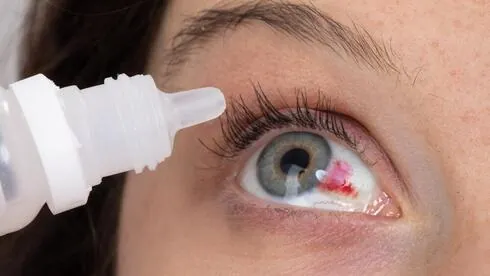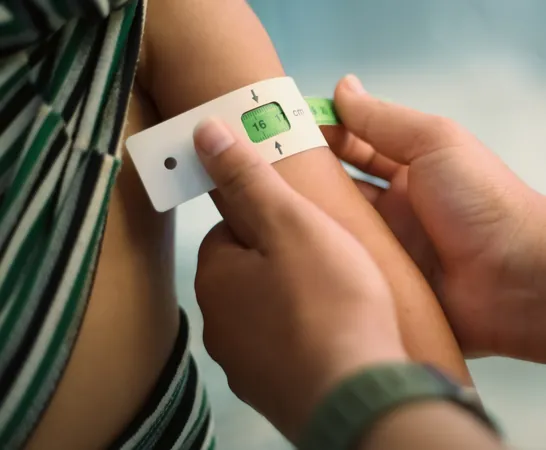
Red Eye Spot? Here’s What It May Mean for Your Health!
2025-09-06
Author: Daniel
What Is That Red Spot on Your Eye?
Spotting a sudden red mark on the white of your eye can be alarming, but fear not! This condition, known as a subconjunctival hemorrhage, often occurs when a small blood vessel bursts beneath the thin, transparent layer covering the eye. Shockingly, it’s usually harmless.
Typically Harmless but Not Always!
In most instances, these red spots are painless, won’t affect your vision, and will clear up on their own within just a few days to two weeks. However, for older adults or those who experience recurrent episodes, it might hint at a more serious health issue.
Causes Behind the Burst Blood Vessels
According to Dr. Shiri Shulman, a leading ophthalmologist, the reasons for these hemorrhages can be divided into two categories: local and systemic. Local causes include vigorous eye rubbing or severe dryness, which has become increasingly common due to our digital lifestyles. Prolonged screen time leads to reduced blinking, drying out our eyes, while air conditioning and heating further exacerbate this issue. Overusing eye drops, especially for conditions like glaucoma, can also weaken delicate blood vessels.
On the flip side, systemic issues such as high blood pressure can make blood vessels more fragile. Medications that thin the blood like aspirin or warfarin can heighten the visibility and duration of such bleeds.
Everyday Activities Can Trigger It!
Believe it or not, simple actions like sneezing, coughing, lifting heavy items, or even straining during constipation can spike venous pressure, leading to an eye bleed. Dr. Shulman explains that increased abdominal pressure engorges veins and can cause tiny vessels in the eye to rupture.
Red Eye: A Sign of Something More?
While these red spots often don’t signal serious issues, Dr. Shulman emphasizes that recurrent occurrences should prompt further medical evaluation to rule out underlying health conditions.
Understanding Symptoms of Eye Hemorrhages
The most obvious sign of a subconjunctival hemorrhage is the appearance of a striking red or dark patch on the eye's white area. While it may look alarming, it’s generally painless and does not interfere with vision. Many people don’t even notice it until they catch a glimpse in the mirror!
How Long Does It Last?
Typically resembling a bruise, the spot will fade over one to two weeks, changing color from bright red to orange and then yellow before completely disappearing. No treatment is needed, although lubricating eye drops can alleviate any slight discomfort.
Who’s at Risk?
Research indicates that healthy young adults usually have benign occurrences related to minor trauma or dryness. However, older adults may face more serious underlying vascular problems such as high blood pressure or diabetes.
Contact Lens Users Beware!
Though contact lenses aren’t a direct cause of eye bleeds, improper handling can lead to irritation. It’s crucial to practice proper hygiene and correct lens usage to reduce the risk.
When to Seek Medical Help?
Most subconjunctival hemorrhages won’t need medical intervention. However, consult a doctor if the spot doesn’t fade within two to three weeks, if you experience pain, discharge, swelling, or changes in vision, or if you have a history of blood thinning medications or bleeding disorders.
Dr. Shulman advises that while the bleeding itself isn’t dangerous, it can occasionally indicate other health issues, such as uncontrolled hypertension. She stresses the importance of assessing blood pressure and ruling out more serious internal problems, like bleeding in the vitreous or retina, which require immediate attention.



 Brasil (PT)
Brasil (PT)
 Canada (EN)
Canada (EN)
 Chile (ES)
Chile (ES)
 Česko (CS)
Česko (CS)
 대한민국 (KO)
대한민국 (KO)
 España (ES)
España (ES)
 France (FR)
France (FR)
 Hong Kong (EN)
Hong Kong (EN)
 Italia (IT)
Italia (IT)
 日本 (JA)
日本 (JA)
 Magyarország (HU)
Magyarország (HU)
 Norge (NO)
Norge (NO)
 Polska (PL)
Polska (PL)
 Schweiz (DE)
Schweiz (DE)
 Singapore (EN)
Singapore (EN)
 Sverige (SV)
Sverige (SV)
 Suomi (FI)
Suomi (FI)
 Türkiye (TR)
Türkiye (TR)
 الإمارات العربية المتحدة (AR)
الإمارات العربية المتحدة (AR)